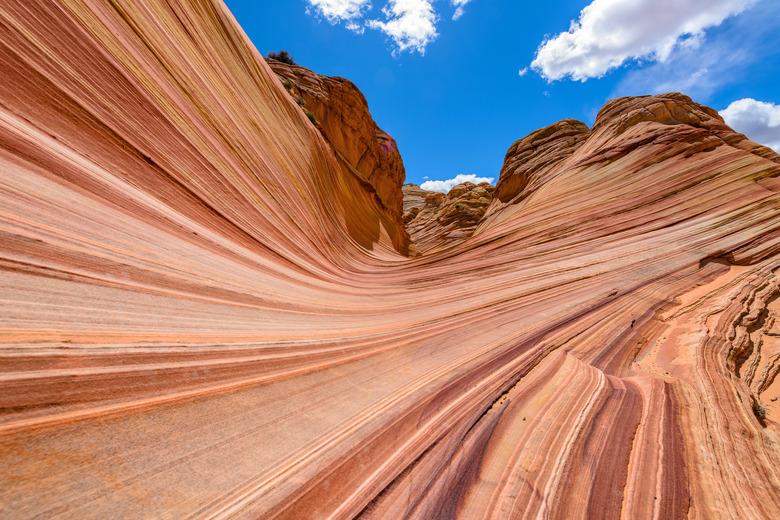Areas Of The World That Have Sedimentary Rocks
Geologists have categorized rocks into three different types. Igneous rocks are formed from magma or lava that is cooled to a solid. Metamorphic rocks are formed when other rocks of any type undergo heat and pressure to form a different rock. Sedimentary rocks are formed from other rocks or substances that have been weathered, eroded or otherwise broken apart.
Sedimentary Rock Types
Sedimentary Rock Types
Clastic sedimentary rocks are formed from particles of other rocks. An example of a clastic sedimentary rock is sandstone, which is made of particles of sand that have been cemented together. Chemical sedimentary rocks are formed from chemicals in the environment, such as gypsum found at White Sands National Park and halite, or rock salt. Organic sedimentary rocks are formed from the remains of living things, such as coal or fossilized bone.
Where Sedimentary Rocks Are Found
Where Sedimentary Rocks Are Found
Sedimentary rock are found everywhere on the planet. It is the most common type of rock in the world, making up more than 70 percent of all the rocks on the earth. It is so common because it results from the weathering and erosion of other rocks, which is a process that happens the world over. You can find sedimentary rocks in almost every area of the world and almost any climate, from the bottom of the ocean to the desert.
Likeliest Locations
Likeliest Locations
You're most likely to find sedimentary rocks near sources of water, which is where a lot of erosion takes place. You can find different types in riverbeds, ponds and coasts and throughout the oceans. Even a relatively young location that is primarily formed by igneous rock, like the Hawaiian Islands, have sedimentary rocks that have formed from the weathering of the land and ocean floor. Deserts, which have plenty of wind erosion, can also be sources of sedimentary rock.
Water Locations
Water Locations
Most water-based locations have sedimentary rock deposits. Nonmarine environments have stream and lake sediments. Glacial lakes and grooves have ice deposits. Areas of the continental shelf have sediment deposits from the mouths of rivers and deltas, beaches, evaporates and coral. Areas of the continental slope have deep-sea fans, deep-sea oozes and sediment drifts.
Fossils
Fossils
Fossil-rich areas have high concentrations of sedimentary rock. This results from remnants of living things that have been buried and cemented together or chemically altered, but have not been buried far enough to be heated up to the point of metamorphosing or melting into magma. In particular, limestone deposits throughout the Midwest have large amounts of fossils in the rock. You can find other evidence of the earth's past in stone deposit, including ripple marks, mud cracks, raindrops and even footprints from animals in stream beds that have been turned to stone.
Cite This Article
MLA
Carr, Kevin. "Areas Of The World That Have Sedimentary Rocks" sciencing.com, https://www.sciencing.com/areas-world-sedimentary-rocks-8593004/. 13 March 2018.
APA
Carr, Kevin. (2018, March 13). Areas Of The World That Have Sedimentary Rocks. sciencing.com. Retrieved from https://www.sciencing.com/areas-world-sedimentary-rocks-8593004/
Chicago
Carr, Kevin. Areas Of The World That Have Sedimentary Rocks last modified August 30, 2022. https://www.sciencing.com/areas-world-sedimentary-rocks-8593004/
